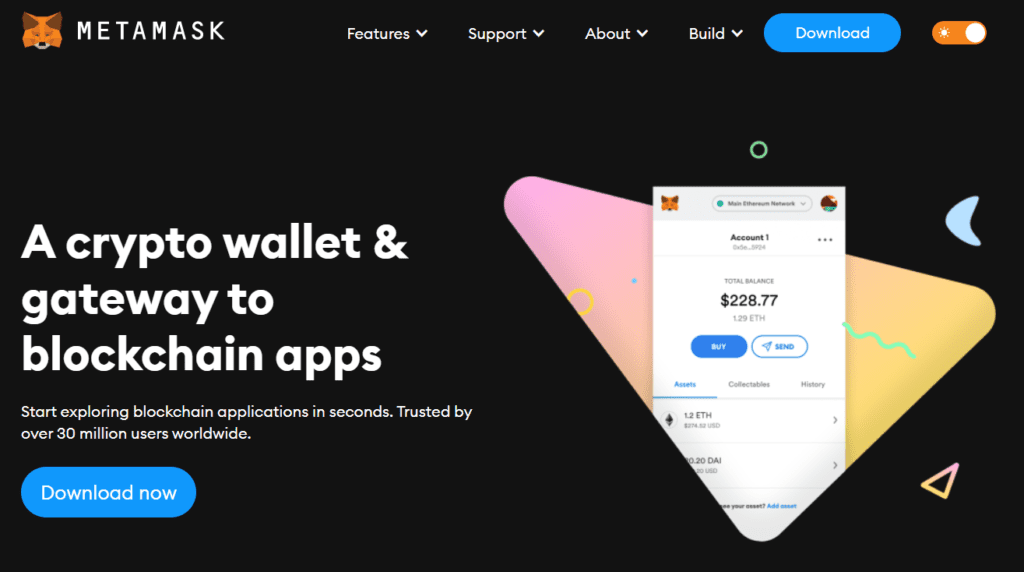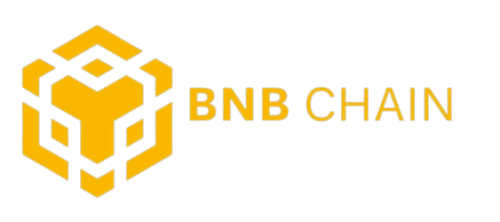The concept of leveraged yield farming in cryptocurrency became popularized in 2017 but has been around for quite a while before that as well. Think of it as earning a profit with borrowed money, reinvesting profits, and over time netting a profit even after paying back the loan – with interest!
You can compare leveraged yield farming to actual farming, in a way, except that instead of buying the land, equipment, seeds, and fertilizers with your own money, you invested borrowed money. Plus, there isn’t that much physical effort involved, either.
In this article, we will look at the concept of leverage yield farming closely and see how the concept can really help you scale your portfolio!
Leveraged Yield Farming – Do You Really Reap What You Sow?
The concept of leveraged yield farming involves using the same principles as traditional yield farming, except that the initial capital for the venture comes from a loan. You borrow the ‘capital’ for your investment, invest it in a way that maximizes returns on their investment, and repay the loan with your earnings.
Basically, you get to leverage the power of compound interest by reinvesting profits back into the original investment. This allows for exponential growth over time, as each new investment builds upon the previous one. Meanwhile, you also keep making payments against your loan amount from the earnings. You don’t lose any money while doing so but only get to pocket the difference.
Naturally, there are several risks involved with the strategy as well. What if you don’t earn enough to make regular payments? What if the market volatility catches up to you, and instead of earning the interest, your portfolio (or the farm) loses too much value immediately? The loan will still need to be repaid with interest. If you aren’t careful enough, there is a very good chance that you may just end up netting a loss!
And that leads to just one thing… Trauma.
This shows that leveraged yield farming, unlike traditional yield farming, is an advanced technique and should only be practiced once you have a large enough portfolio.
To do this, you will first need to identify a pool of assets that you think will generate high returns over time. You will invest in these assets and reinvest the profits back into the pool. You will have to repeat the process until you achieve the desired level of return. Of course, the returns may take a while to stack up.
Think of it as a dividend reinvestment model in the traditional stock market, but again, you had loaned out your initial capital, to begin with.
To avoid the trauma, it is important to carefully select the assets that you invest in. If the asset prices go down, you could end up losing money. Furthermore, leverage can magnify both profits and losses. This means that it is possible to make a lot of money very quickly but also to lose everything just as quickly.
How Much Can You Earn with Leveraged Yield Farming?
The amount of money that you can earn with leveraged yield farming depends on a number of factors, including the size of your investment, the assets you select, and the level of risk you are willing to take. In general, though, it is possible to make a lot of money with this strategy.
The technique and strategy you choose to adopt, along with the platform you choose, can also dictate how much returns you get. For example, with Uniswap V3, leveraged yield farming gives access to leveraged yield vaults. These vaults give you the option of investing in the following pools and enjoy different levels of leverage:
- USDC/WETH – 6X max leverage (0.3%)
- MATIC/USDT – 6X max leverage (0.05%)
- MATIC/USDC – 6X max leverage(0.3%)
- MATIC//WETH – 6X max leverage (0.05%)
- MATIC/USDC – 6X max leverage (0.05%)
- USDC/WETH – 6X max leverage (0.05%)
- MATIC/WETH – 6X max leverage (0.3%)
- WBTC/WETH – 6X max leverage (0.05%)
- USDC/USDT – 8X max leverage (0.05%)
These smart vaults come with a range of features. Binance leverage yield farming also offers a number of features on Binance. However, you will need to use these features smartly as well. Even with the most advanced platforms for leveraged yield farming, many users often end up working way too hard than they have to.
If you are careful about the investments you make and the risks you take, leveraged yield farming can be an extremely profitable way to grow your money.
History of Leveraged Yield Farming
The concept of leveraged yield farming is not new. It has been used by investors for centuries to maximize returns on their investments. The basic idea is to reinvest profits back into the original investment, allowing for exponential growth over time.
This strategy was first popularized in the stock market, where it was used by wealthy investors to make enormous profits. In the early 1900s, this strategy began to be used in the bond market as well.
Leveraged yield farming really took off in the cryptocurrency world in 2017, when the first big wave of ICOs (initial coin offerings) occurred. Many investors made a fortune by investing early in these new assets and then reinvesting their profits back into the ICOs.
The 2017 ICO boom was followed by a sharp downturn in the cryptocurrency markets in 2018. This caused many investors to lose money, but those who held onto their assets and continued to reinvest their profits made huge returns when the market finally recovered in 2019.
This shows just how lucrative the concept of yield farming can be when employed at the right time and with the right strategy.
Getting Started with Leveraged Yield Farming
If you are interested in getting started with leveraged yield farming, there are a few things you need to know.
First, you need to have a good understanding of the cryptocurrency markets and the assets that you are interested in investing in. You also need to be willing to take on some risks.
Leveraged yield farming can be extremely profitable, but as mentioned above, it is also possible to lose everything if the market goes against you. There is a very valid reason to be scared. Man the stations at all times to avoid a panic.
Once you have a good understanding of the risks and rewards involved, you can start searching for assets that you believe will generate high returns over time. Once you have found a few promising assets, you can start investing and reinvesting your profits back into the original investment. With time and patience, you can grow your investment exponentially and achieve great financial success.
Step 1:
The first thing you need to do is identify a pool of assets that you believe will generate high returns over time. This can be done by doing your own research or by following the advice of an investment professional.
Depending on the platform you choose, your leveraged yield farming will also differ. You can either go with dedicated yield farming platforms, such as Kalmar, AQRU, DeFi Swap, eToro, and more, or go with all-rounder exchanges such as Binance, Uniswap, and more.
Step 2:
Now, you need to start working on the “leverage” part of yield farming. This is basically you taking a loan to start investing. Ethereum leverages are known across the industry for being reliable and having relatively stable interest rates. However, there are a number of options available to you as well.
While Ethereum is a great option for Uniswap, if you are working on Binance, BNB leverage pools may be a much better option.
Step 3:
Let’s say you want to start off with Binance because of the slew of features it offers. You will first need to set up a wallet for yield farming. Metamask is a great wallet with near-native functionality with Binance.

Now, connect the wallet with your Binance account
Step 4:
After connecting your wallet and identifying promising assets, you need to start investing in them. You can do this by buying the assets outright or by investing in a fund that specializes in them. When buying an index or other funds that specialize in your chosen token, make sure you consider all aspects of the fund as well. There are some risks involved with investing in funds as well.
Step 5 (Optional):
The coin you have chosen may not always be available on every exchange or platform for yield farming. While Binance is actively updating its library for more coins, there is still a chance that your chosen currency may not be listed.
Find the smart contract address with respect to your chosen coin for that. You can use EtherScan for the smart contract address. Paste the address into 1inch to start yield farming.

Remember, if a coin is not listed on a DEX, it may be because of a failed audit, lack of developer credentials, or other verifiability reasons. There are a number of scam coins out there, so make sure you do your research and get the official contract address.
Step 6:
Once purchased, all you have to do is wait. Once the assets have appreciated in value, you can then sell them and reinvest the profits back into the original investment. This will allow you to magnify your gains and achieve exponential growth over time.
Step 7:
Continue to make regular payments against the “leverage” or loan you acquired to buy the first set of coins.
Leveraged Yield Farming Examples
Here are some examples to consider:
- ICOs
One of the most popular examples of leveraged yield farming is investing in ICOs. ICOs are a type of crowdfunding campaign where startups raise money by selling new cryptocurrencies to investors. These new tokens can then be bought and sold on cryptocurrency exchanges with loaned crypto assets, allowing you to make profits as the liquidity and price of the asset increase.
However, you should also know when to quit. You should keep a close eye on market trends and demand for your specific coin. If the coin starts to devalue quickly, you may end up losing all of your earnings – even those that you reinvested! Binance offers a wide selection of ICOs that you can participate in. These ICOs can be a great way to earn profits if the price of the underlying asset goes up.
You need to find the perfect route, opportunity, and path to fly through the storm.
- Staking
Another popular example of leveraged yield farming is staking your leveraged coins. Staking is the process of holding onto cryptocurrency tokens in order to earn interest in them. Many cryptocurrencies offer staking rewards, which can be extremely profitable if the price of the underlying asset goes up.
- Trading
The traditional way to earn profit from leveraged crypto is through trading. Many investors trade assets back and forth in order to take advantage of price swings. This can be a risky strategy, but it can also lead to huge profits if timed correctly. However, many experts do not consider trading leveraged assets as “leveraged yield farming” for obvious reasons. This isn’t exactly “farming,” is it?
Risks of Leveraged Yield Farming
Leveraged yield farming can be a great way to earn profits, but it also comes with risks.
- Volatility
The prices of assets can be very volatile, which can lead to losses if you’re not careful. It’s important to understand the risks before investing in any asset.
- Liquidity
Many assets are not very liquid, which means it can be difficult to sell them when you want to. This can lead to losses if you’re not careful. With leveraged yield farming, speed and versatility are key, which is why you need to invest in liquid assets as much as possible. Of course, illiquid assets do tend to have better returns.
- Counterparty Risk
When you take any loan, there is a risk that the lending party will increase interest rates, or the volatility of cryptocurrency, in general, may cause the value of the loaned assets to decline. If the price gets reduced during your yield farming process, the returns will also decrease – making loan payments all the more difficult. This risk is also known as Margin Call risk.
If the value of your assets falls below a certain level, you may be forced to sell them at a loss.
- Risk of Fraud
There is always a risk that you could be scammed when investing in leveraged yield farming. From illiquid pools to complete rug pulls and crypto exploits, the possibilities of fraud are endless. Of course, these risks are present everywhere, but with leveraged yield farming, you will end up getting crushed not only by the fraud but also the repayment liability.
Fraud ends up taking your chance at happiness and good returns and ends up crushing it.
Best Platforms for Leveraged Yield Farming
The best platform for leveraged yield farming will vary depending on your needs. Some of the most popular DEXes that also offer leverage yield farming include:
Binance
Binance is one of the world’s largest cryptocurrency exchanges and offers a variety of ways to profit from leveraged yield farming.
KuCoin
KuCoin is another popular cryptocurrency exchange that offers a variety of ways to profit from leveraged yield farming.
Huobi
Huobi is another popular cryptocurrency exchange that offers a variety of ways to profit from leveraged yield farming.
OKEx
OKEx is another popular cryptocurrency exchange that offers a variety of ways to profit from leveraged yield farming.
Bitfinex
Bitfinex is another popular cryptocurrency exchange that offers a variety of ways to profit from leveraged yield farming.
For BNB, some of the best-leveraged yield farming platforms include PancakeSwap, Venus, Bearn.fi, Pancake Bunny, and Autofarm.
For MATIC, some of the best platforms include Aave, ForTube, Polycat, and Impermax.
Best Strategies for Leveraged Yield Farming
There are several strategies that work for different leveraged yield farms and coins. Ultimately, it depends on what you need and the market conditions that you are experiencing. These strategies aren’t a one-size-fits-all solution, which makes leveraged yield farming so complex and risky.
Some examples include:
Buying Low to Sell High
This is the most basic leveraged yield farming strategy, but it can be very effective if done correctly. You will need to buy assets when they are low and sell them when they are high in order to make a profit. Of course, the timing of your “leverage” will also dictate the interest rate you have to pay. During a bear market, the interest rates will likely be lower than during a bull market.
Dollar-Cost Averaging
This is a strategy where you invest a fixed amount of money into an asset over time. This can help reduce your overall risk and increase your chances of making a profit. Furthermore, as you start to “fill” each asset with liquidity, you will start looking toward other solutions. This will give you better portfolio diversification opportunities as well.
Portfolio Rebalancing
Speaking of portfolio, this is a strategy where you sell assets that have appreciated in value and buy assets that have declined in value. This strategy also helps you maintain a diversified portfolio and reduce your overall risk.
Short Selling
Short selling is a strategy where you sell an asset you do not own and hope to buy it back at a lower price so you can profit from the difference. This is one of the most profitable strategies you can employ but also have the highest degree of risk.
Creating Your Own Success Story with Leveraged Yield Farming
Leveraged yield farming is a strategy that can be used to increase returns in a portfolio of cryptocurrency assets. By borrowing additional funds and using these to purchase more assets, investors can amplify their gains. This approach has been used successfully by a number of investors, and there are several notable success stories.
With the right strategy, anyone can make a fortune in this rapidly-growing industry. However, keep in mind that while leveraged yield farmers chase better return on investment, they also risk losing it all!







